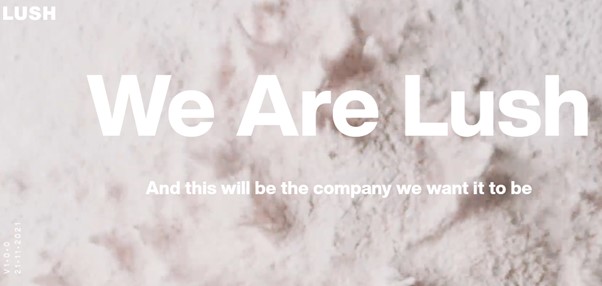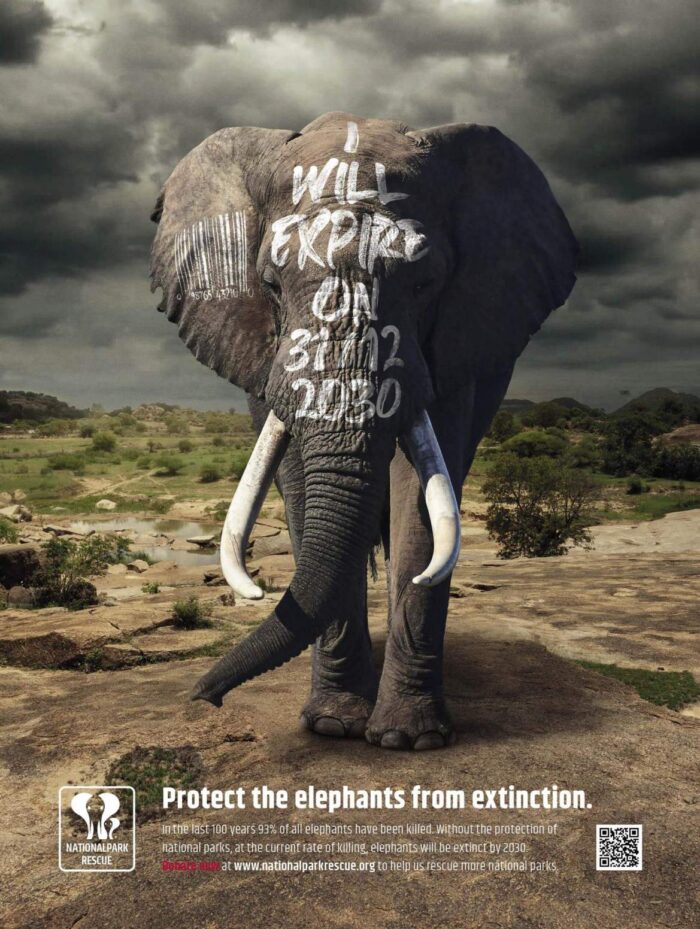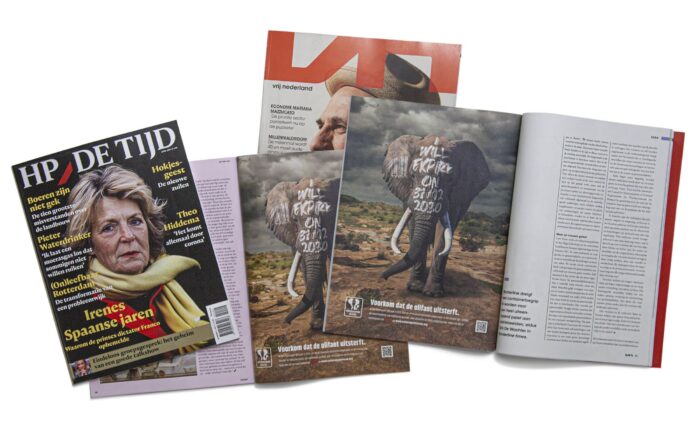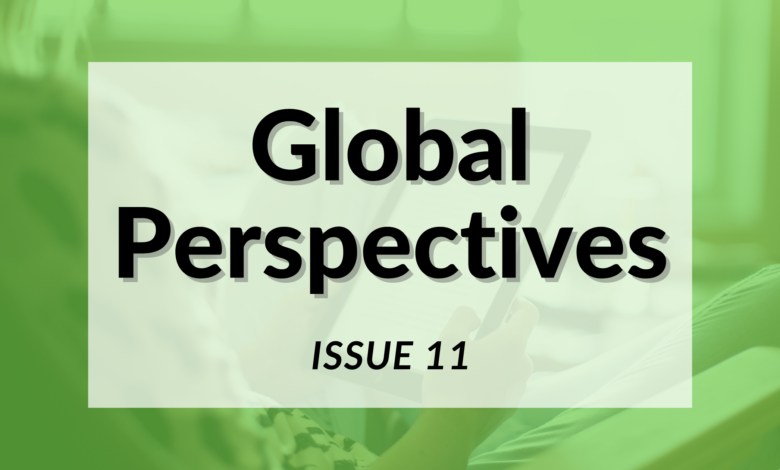The latest insights and innovations from the world of marketing. Includes analysis of the decision by cosmetics brand Lush to vacate social media, examines why playing it safe is not the safe option, and test-drives the latest automated writing tool.
Global Perspectives brings you the latest thought-provoking ideas, real-life case studies and sharpest insights to help you become a better marketer.
Why playing it safe, isn’t safe
 Ogilvy’s favourite direct marketer, Drayton Bird, has previously raised the issue of ‘difference’ and why it’s so important for marketers to set themselves apart from the competition. Nonetheless, most marketing departments continue to ‘play it safe’ by aping formats and fashionable content styles, consciously or otherwise.
Ogilvy’s favourite direct marketer, Drayton Bird, has previously raised the issue of ‘difference’ and why it’s so important for marketers to set themselves apart from the competition. Nonetheless, most marketing departments continue to ‘play it safe’ by aping formats and fashionable content styles, consciously or otherwise.
It’s a case of the bland leading the bland.
Perhaps you need to ‘Find your X!’. Or perhaps not, as a 2017 study by BBH Labs found that at least 27 brands were using this format! (And don’t get me started on the obligatory – and rather infantilising – ‘Here when you need us most…’!).
Award-winning marketing strategist, Tom Roach, explored this issue on his blog, making a powerful case for why brands must discover their USP. He believes there are a number of root causes, including:
- Too many companies competing over the same product space making brand differentiation hard to achieve
- Business models are increasingly agile and ready to pivot, making a distinct brand identity difficult to define
- A lack of formally qualified marketers – many practitioners learn on the job and are unaware of key marketing principles.
This could be costing businesses, as Tom explains:
“Sameness is commercial suicide – whether your chosen way of being different is differentiation or distinctiveness or like me you’re a cakeist and would ideally want both. Yet there’s a growing ‘sea of sameness’ out there, and the sea levels seem to be rising.”
The data supports his analysis:
“An analysis of actual prices paid (from the loyalty card data of 2400 shoppers for 79 brands) showed that shoppers paid 22% more for brands they find different and meaningful vs those they didn’t, with difference alone accounting for 40% of this on average.”
Lessons for marketers:
- Make your brand distinct from the competition. Consider: are we following a well trodden, or are we striving to be special?
- It’s time to get your creative juice flowing, get brainstorming in the loosest possible manner.
- But, when you’re honing the idea, never forget the AIDA model. Will it grab Attention, pique Interest, create Desire and compel Action?
Recommended reading:
Ditching social media – will it work?

Ethical cosmetics brand, Lush, has decided to ditch social media citing concerns about its mental health implications.
Jack Constantine, CDO and product inventor, Lush, outlines the reasons:
“As an inventor of bath bombs, I pour all my efforts into creating products that help people switch off, relax and pay attention to their wellbeing. Social media platforms have become the antithesis of this aim, with algorithms designed to keep people scrolling and stop them from switching off and relaxing.”
It’s a brave move, especially when you consider the old marketing mantra: “Be where your customer is.” But perhaps it could work. As a company which promotes itself on the back of strong ethical principles, it demonstrates that they practice what they preach. (Though workers at its factory in Australia may have something to say about that.)
Lush are likely hoping that by stepping away from the noise, they may become an oasis of calm and perhaps make their brand more desirable. Meanwhile, the brand can remain prominent with it’s army of loyal customers/influencers sharing and caring. It will be interesting to see if the company invests in influencer marketing.
It’s a not an entirely radical move. Luxury fashion brand Bottega Veneta welcomed in 2021 by ditching social media. The end result: a greater sense of exclusivity, something a high-end brand will welcome.
Lessons for marketers:
- Is social really providing value? Or is it draining marketing resources for little return? It’s time to check social’s return on investment!
- Brand advocates can be more powerful than the brand itself. Is this a better route for focusing your social media marketing strategy? Encouraging conversations and leveraging the power of your brand advocates may provide more value.
- Withdrawing – or reducing – your social media output can allow more time for other marketing activities which provide better value. What is the most productive use of your time?
Recommended reading:
International Campaign Highlight
Agency: Featuring Design
Client: National Park Rescue
Netherlands-based marketing agency, Featuring Design, donates some of its time to help support National Park Rescue, a charity which protects wild animals in Zimbabwe’s national parks against the threat of poachers.
According to the campaign, 93% of all elephants have been killed in the last 100 years, and, at the current rate of killing, could be extinct by 2030.
The images below depict the worrying statistics painted on the animals themselves, providing a tangible reminder of what’s at stake.



Lessons for marketers:
- It emphasises the importance of creativity and originality aligned to a purpose. By powerfully linking statistics to the subject, the message is amplified. Is there a way you can more powerfully illustrate marketing insights?
- A reminder of the power of image. Is your marketing stuck in a rut of stock imagery? Could you break out of it and provide a bespoke design which is more striking/memorable?
- Also a reminder of what’s at stake. With Xmas fast approaching you might consider a small donation (if you have a few pennies to spare).
See more imagery from the campaign.
Will human wordsmiths be partnered with AI Wordsniff?
 Another ‘innovative’ AI writing tool has launched. This time ‘Wordsniff’ is promising to get your content smelling of roses. The slight twist, is that they offer human back-up.
Another ‘innovative’ AI writing tool has launched. This time ‘Wordsniff’ is promising to get your content smelling of roses. The slight twist, is that they offer human back-up.
It boasts:
“Wordsniff is the first copywriter that combines the power of AI with human proofreaders. You can get your articles written by Wordsniff and then use our human proofreaders to edit and improve your content.”
The idea is that 80% of the work is done by the algorithm, then humans finish the job. The perfect union between human and machine? Time will tell.
This writer tried a free version, but the results were underwhelming. Here’s what happened…
I offered the following topic for a blog post: Can AI copywriting tools really help marketing teams?. I then offered some (admittedly) vague points to cover within the article. Here’s what it came up with (cue lots of filler!):
There are many AI copywriting tools on the market.
What are AI copywriting tools? How do they work? Can they help businesses? How do they help businesses? Results. (This repeats some of the description I provided as part of my brief, which, to be fair, could have been more carefully thought-through!)
This article aims to answer these questions and find out if AI copywriting tools are worth it for small businesses.
What is AI and how do AI copywriting tools work?
Artificial intelligence is a branch of computer science that aims to study and develop algorithms that can perform tasks that normally require human intelligence. This can include performing a natural language processing task such as understanding human language, acting like a human, or solving problems.
Why use AI tools?
The answer to these questions and more, here.
Here are some tools that use AI:
In other words, AI is used to find and evaluate data, and use it to make decisions.
This is why the AI copywriting tools are able to analyze the text, understand it, and then improve it.
It’s important to remember that AI is not great at writing.
Woah, that’s a huge admission! But perhaps the most salient truth.
It continues in a similar vein, repeating previous points in a rather disjointed way and littered with plenty of ‘tee-ups’. The technology seems to have a little way to go. Copywriter Jenny Lucas has explored AI content writing tools in more depth and her experiences certainly hit the funny bone.
On the other hand, Lead Monitor.AI reports positively on the work performed by its own robot writer which churns out data-heavy investment reports – though it seems to fill in the gaps in pre-formatted article structures, rather than start something completely anew.
Lesson for marketers:
- Don’t worry copywriters, your job is safe, for now!
- However, it’s worth exploring this technology and remaining informed about how things are progressing. The most likely short-term advancements will require a partnership between human and machine. Indeed, Wordsniff’s AI service seeks to bring these two elements together and, perhaps, with a carefully defined brief, the writing tool can at least provide an outline of an article from which human writers can create content of value.
- A better option for now might be automated tools which help with content planning and SEO-friendly article ideas.
Recommended reading
That’s it for this month. Let us know what you’ve been reading in the comments below.











Leave your thoughts